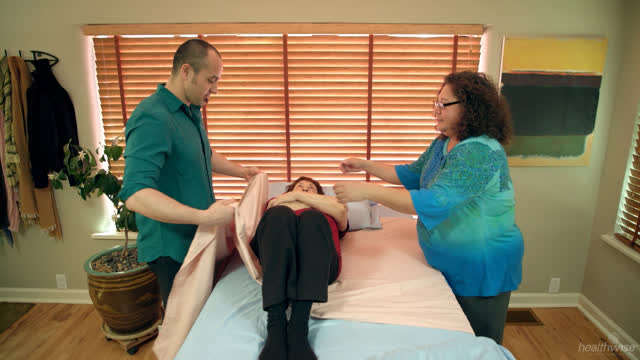Caregiving: How to Help With a Shower
Topic Overview
A shower helps the person you’re caring for feel clean and fresh. It’s also a good time to check the skin for sores or rashes.
It’s a good idea for the person to have a shower at least once a week, if possible. On other days, he or she may just want a bath at the sink.
The person may need only a little help to take a shower. It’s important to let him or her do as much of the bathing as possible. He or she may need help to step over the side of a bathtub or the edge of a shower stall. The person may want to sit on a shower chair or stool to save energy or if he or she has trouble with balance or can’t walk. It also helps the person wash his or her legs and feet.
It’s important to have handrails and a nonskid mat in the shower or tub. A shower chair or a bench also is a good idea. You can find many styles of these devices. With a shower chair, the person can sit in either the shower or the tub while bathing. A bench sits on the edges of the bathtub. The person can sit on the bench and then swing his or her legs into the tub. The bench can help a person get into the tub as well as be used during the shower.
Some things to think about
- As you help to undress and bathe your loved one, try to be as relaxed as possible. Shower time can be embarrassing for you and the person you’re caring for. This may be especially true if you are caring for someone of the opposite sex. If you aren’t embarrassed or upset, the person may feel more comfortable.
- Give your loved one as much privacy as possible. If he or she is safe alone for a while and is able to bathe without help, shut the door or close a curtain and step out of the bathroom. But stay close in case he or she asks for help.
- If the person you’re caring for has dementia, he or she may not remember how to take a shower. Sometimes it helps to bring the person into the shower fully dressed. It can remind him or her of how to take a shower and the need to undress. Some people are afraid of the water or don’t like how it feels. If the person doesn’t want to get under the water, don’t force him or her. Encourage the person to have a sink bath instead.
How do you help someone take a shower?
Gather your materials
To give a shower, you will want:
- Washcloths or bath sponges.
- Towels.
- A bar of soap or liquid soap.
- Tear-free shampoo or no-rinse shampoo.
- Body lotion that is especially for dry skin.
- A removable showerhead with a long hose (if you have one).
Get ready for the shower
- Offer the person a robe for comfort and privacy while you set up the shower supplies. A terry cloth robe works well because it can be worn after the shower to help the person dry off.
- Gather your materials and set up a shower stool or chair. Help the person onto the chair if he or she needs help.
- Let the person take off the robe, but give help if needed.
- Use the back of your hand to test the water to make sure it’s not too hot or cold.
Helping with the shower
- Put soap on the washcloth or sponge and give it to the person. Let the person wash himself or herself. You can wash areas that he or she can’t reach.
- Gently remind the person you’re caring for that it’s best to start with the cleanest areas and finish with those that are less clean. The person can start with the face, then wash his or her arms, torso, and back (which you can help with, because it’s hard to reach), and then the legs and feet. He or she can finish by cleaning the groin and anal areas.
- If you help bathe the person, check the skin as you go for signs of rashes or sores. Pay special attention to areas with creases, such as under the breasts or the folds on the stomach. Also look at bony areas, like the elbows and shoulders.
- If you see any redness, do not rub or massage the red areas. It could cause more tissue damage.
- Help the person wash his or her hair with tear-free or no-rinse shampoo.
- Hand him or her the removable showerhead to rinse off. Or you can do it if it’s too hard for the person to manage.
- Give the person a towel to dry off, and help dry his or her back and any other areas that are hard to reach, such as between the toes.
- Offer some body lotion if he or she wants some. Don’t put lotion on areas that can become moist, such as under the breasts or in the folds of the groin.
Current as of: April 1, 2019
Author: Healthwise Staff
Medical Review:Kathleen Romito MD – Family Medicine & Gayle E. Stauffer , RN – Registered Nurse
This information does not replace the advice of a doctor. Healthwise, Incorporated, disclaims any warranty or liability for your use of this information. Your use of this information means that you agree to the Terms of Use. Learn how we develop our content.




